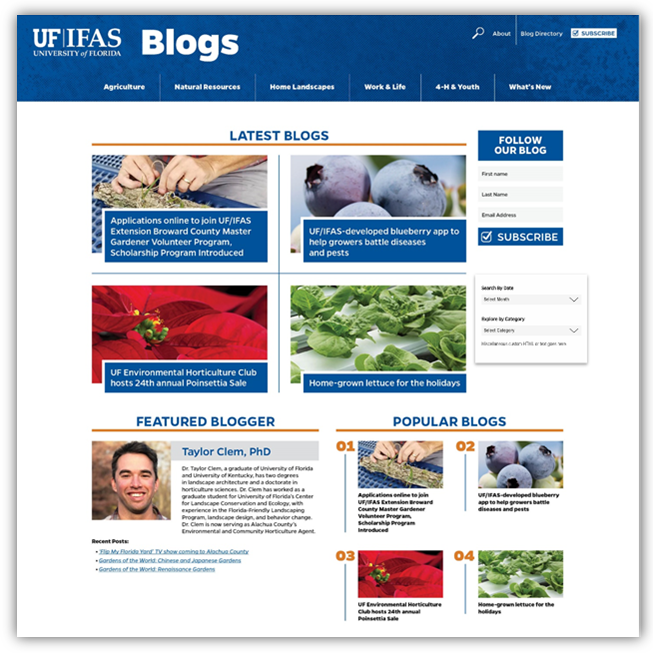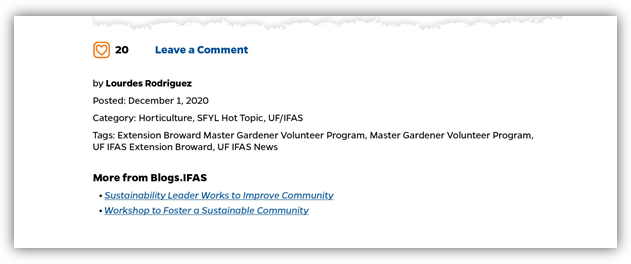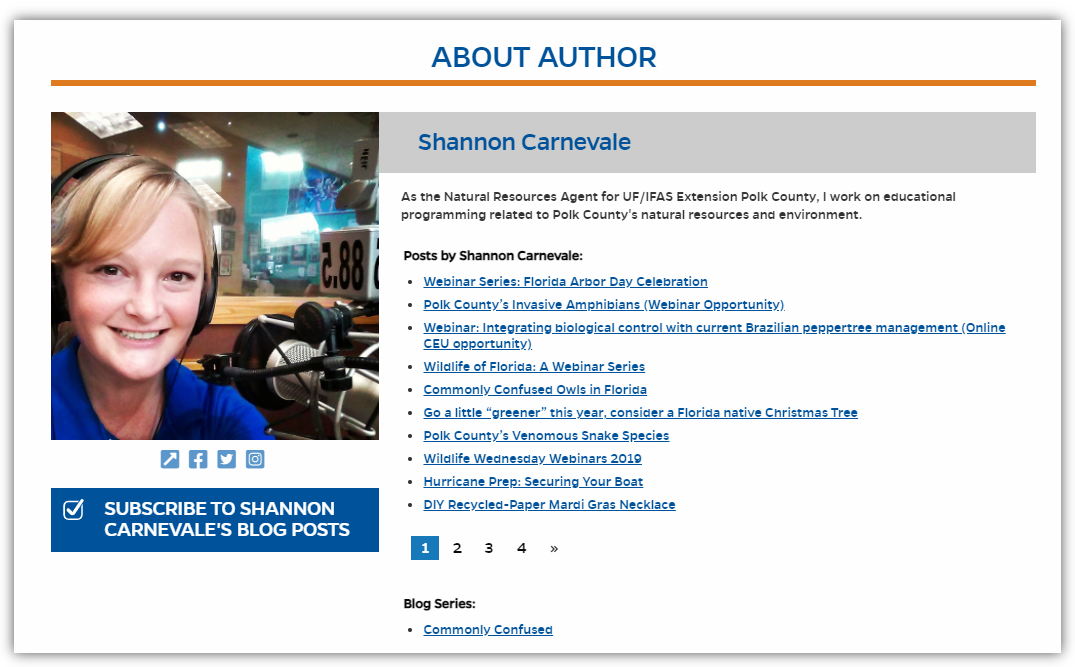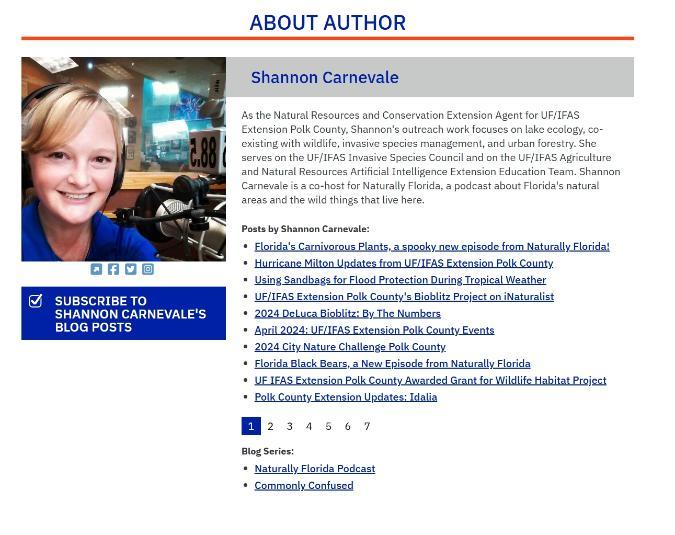IFAS Web Services is thrilled to announce the launch of Blogs.IFAS 2.0. We’ve updated the look and feel and added features that will allow greater interaction to encourage readers to browse and read more of the amazing blog content you all have created!
-------------
Blogs.IFAS 2.0 Features & Functionality Training: https://mediasite.video.ufl.edu/Mediasite/Play/3c6449e563164305acacba922beb15f21d
This training includes:
- Adding co-authors and guest authors
- Adding a blog series to your author bio page
- Accessing statistics for ‘hearts’ on your blog post
- Accessing statistics for video plays on videos embedded on your blog post
-------------
Many of the improvements for Blogs.IFAS 2.0 were “under the hood”, including coding the site in HTML5, improving accessibility, improving YouTube analytics tracking, and other performance enhancements. These improvements help ensure that users can find our blog, use our blog, and stay on our blog.
And many of the updates you can see achieve these same goals, as well! We have updated the look to be sleek and modern to ensure users know that this site has fresh content.
The navigation is re-designed to retain more users and encourage browsing.

The homepage includes more blog posts and a new section for Featured Blogger, to highlight our bloggers on a weekly basis and give readers a chance to see the people behind the posts.

On blog posts pages, readers now have the opportunity to interact in a new way…with our new “heart” button!

In addition, related posts will be displayed below blog posts to encourage readers to explore more Blogs.IFAS content.
On Author Bio Pages, bloggers now have the option to include a Subscribe button that is unique to their blog posts, allowing subscribers to get updates on their posts. Also, if the blogger has written or participated in any blog series, they are displayed on their Bio Page distinctly below their posts.

Authors will also now have the ability to be listed as co-authors on a single blog post.











